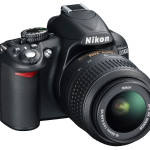Looking to get in with some sidewalk surfing? Make sure you know which types of skateboards are best for you; there’s a big difference between cruising, tech, vert, and many styles more besides. We help you stick the difference below.
View in gallery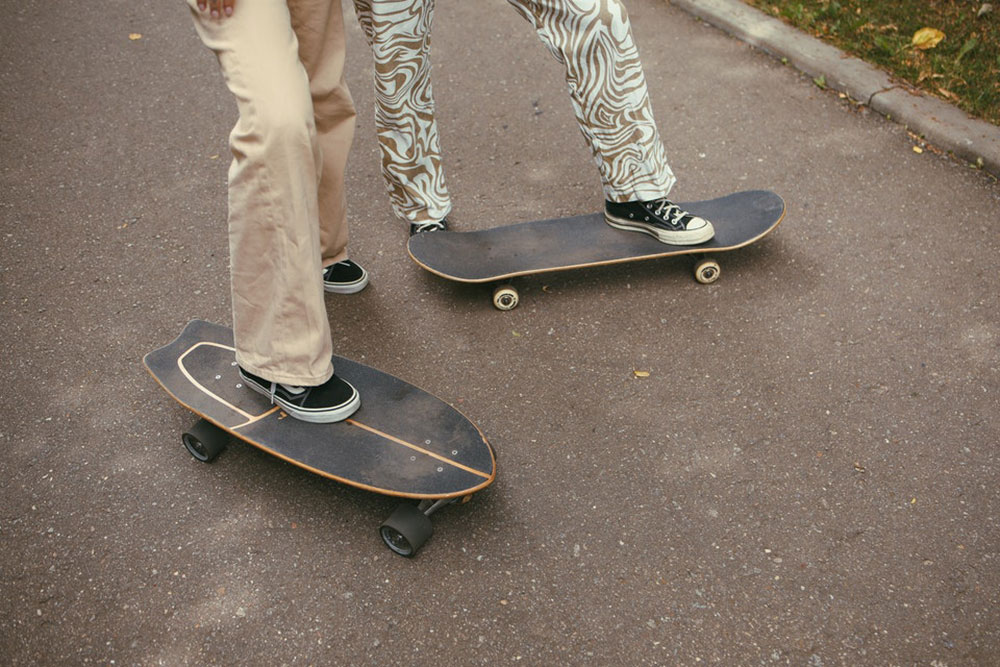
Skateboarding has come a long way from where it started. Early skateboarders would attach wheels to surfboards, or pieces of wood. Then on flat days at the beach, they could surf on dry land.
Although skateboarding hails from humble beginnings, it has grown into a global sporting sensation. And part of what makes skateboarding so popular is the ability to adapt.
Skateboarding is no longer a pastime solely for wave-less surfers. Or just an outlet for anti-society vandals. Now, skateboarding is all of that and more.
If you’re new to the skateboarding world, it can be pretty intimidating. Therefore, let us help you find the type of skateboard that’s perfect for your needs.
But before we dive into different types of skateboards, let’s take a look at what parts make up a skateboard.
Anatomy of a Skateboard
What differentiates each type of skateboard are the various moving parts and how they’re set-up. Here’s a brief breakdown of the most important parts of a skateboard. This way, you can familiarize yourself with the terms.
-
Skateboard Decks
For skateboarders, a deck is like their jersey. With the underside of a skateboard deck showcasing various designs and logos from skate companies.
Each type of deck has a specific shape, some long, and some short. Some are flat, while some have cut outs for wheels. Ultimately, the deck is where your feet go.
And you could be standing on anything from birch, maple, or plastic. What your deck is made of will determine the type of skateboarding you can do.
Without the right kind of deck, you can’t perform tricks, or race downhill. So, it’s important to recognize the difference in decks in order to guarantee you choose the right style.
-
Wheels
View in gallery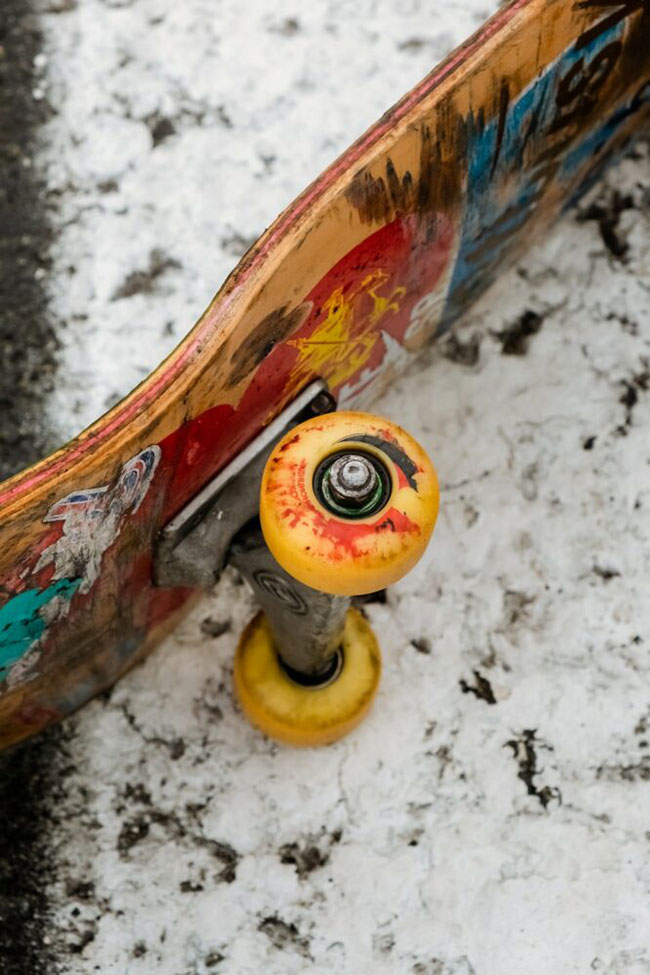
Without wheels, you’re not getting very far on your skateboard. Moreover, the wheels help determine the type of skateboard you’re riding.
Skateboard wheels are made of polyurethane. And you can find both hard and soft wheels on the market. For street skateboards you’ll want to use hard wheels. However, for longboards and reaching higher speeds, you’ll want softer wheels.
-
Grip Tape
You know the sandpaper on top of a skateboard? That’s your grip tape. And this adhesive sandpaper is what gives you extra traction when riding.
While grip tape is crucial for certain styles of skateboarding, there are plenty of boards that do without it. At the end of the day, it depends on what kind of board you ride.
-
Trucks
View in gallery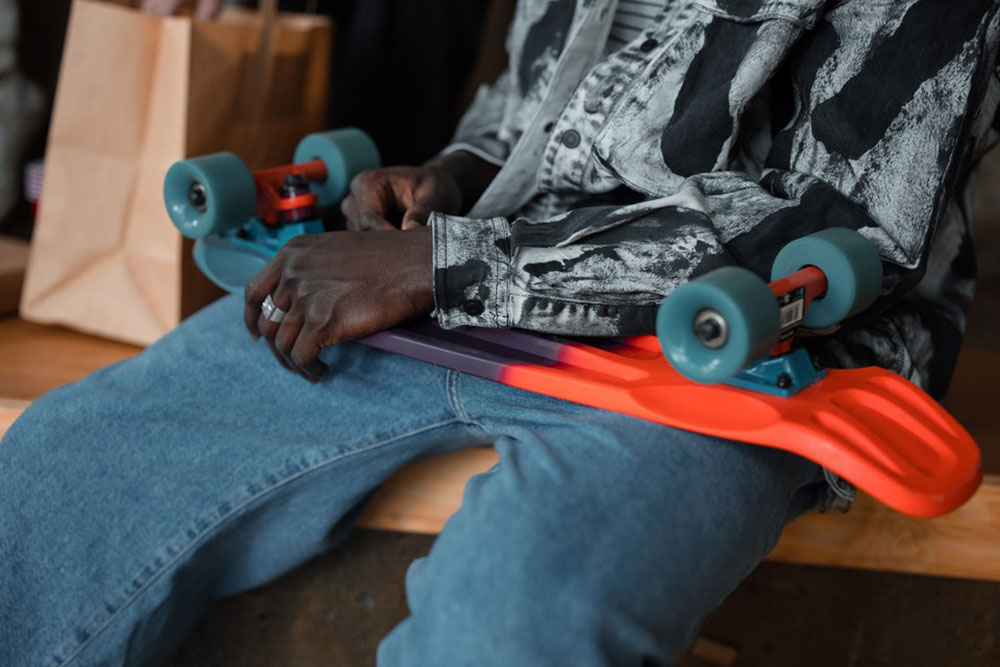
Underneath the skateboard, you’ll find the trucks. And these two metal objects are what keep you moving on a skateboard.
Skateboard trucks are composed of multiple components, all working in unison to keep you rolling along.
When choosing trucks, the most important aspect is that they fit your board correctly. Ideally, your trucks will fit the width of your board.
-
Risers
Sometimes skateboards will have a plastic, or rubber pad between the trucks and the deck. While not every board setup requires risers, they are useful.
In order to prevent the wheels from touching the edges of the deck, you can add risers to your skateboard. Plus risers act as additional padding to reduce shock when performing tricks.
20 Different Types of Skateboards
Once you start looking for a new skateboard, you’ll quickly notice how many types of skateboards there are to choose from. With each type being used for different purposes.
But which of the many types of skateboards is right for you?
While you might like the look of one board, it might not meet your needs. And that’s important to know before you throw down for a new setup.
So, to help you narrow down your options, we have a rundown of 20 different types of skateboards. Everything from the standard street skateboard, to the off road skateboard, and even one shaped like an egg.
1. Street Skateboards
View in gallery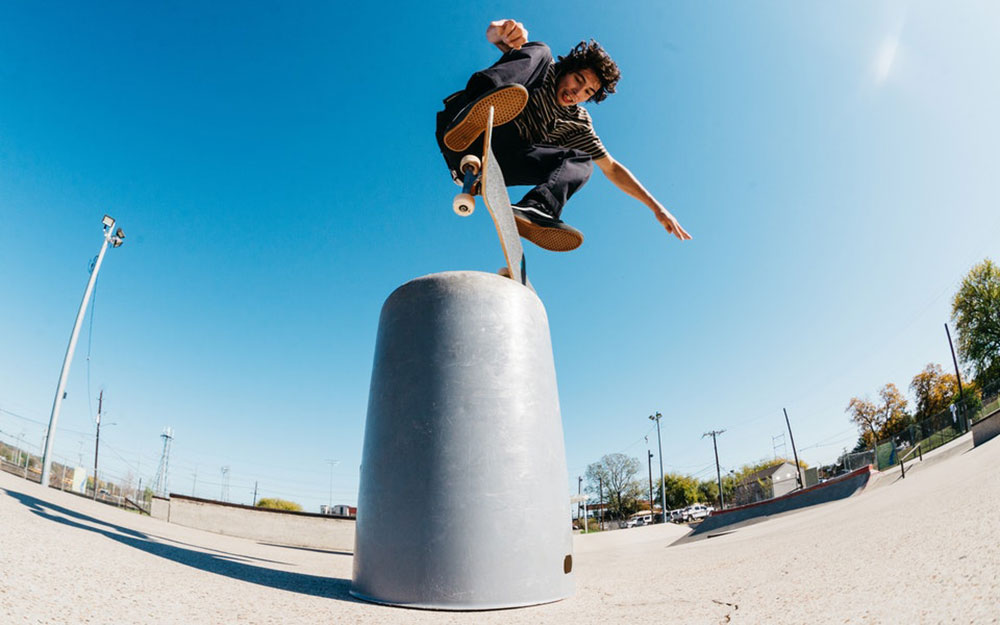
Today, when someone thinks of skateboarding, they’re likely envisioning street skateboards grinding park benches, or jumping down staircases. And we can probably thank Tony Hawk’s Pro Skater game series for popularizing street skateboarding.
But if you’re looking for a skateboard that’s perfect for the concrete jungle, you can’t use any board you come across. You have to find the right setup. And that starts with your deck size.
What you’re looking for is a standard deck that’s roughly 7″-8″.
Along with the proper length, you’ll need your board to be even from one end to the other. Oftentimes, you’ll see these boards described as “popsicle skateboards,” because of the even distribution, similar to a popsicle stick.
When riding and performing tricks on a street skateboard, you’ll want to use a smaller wheel size. Since large wheels mean more speed, small wheels mean a slower board. But a street skateboard is built for landing tricks over high speeds.
2. Double Kick Skateboards
View in gallery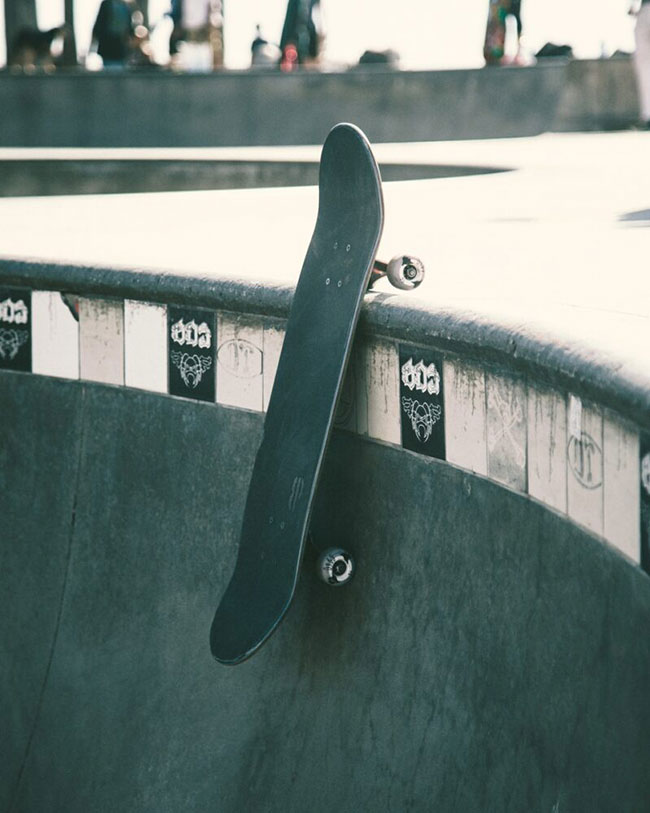
If you’re wanting to perform tricks that take your board off the ground, then look for double kick skateboards. What we mean by double kick skateboard is that both ends of the deck are kicked up, instead of being flat.
By having curves at the ends of a board, you’re able to pop your board off the ground, grind rails, and perform tricks a completely flat board can’t.
You can find double kick skateboards with decks that are flat, or with a steep concave. With boards that have a steep concave, you’ll get more leverage when you perform tricks.
3. Electric Skateboards
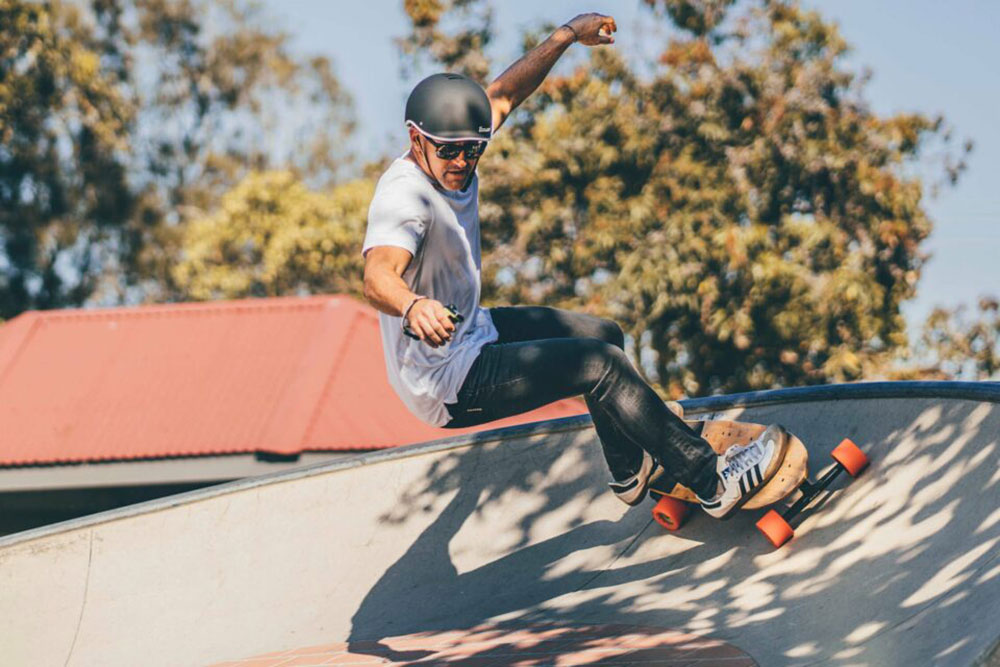
How would you like a skateboard that you can effortlessly ride? Meaning no pushing your board at all. Then, an electric skateboard might suit your needs.
If you’re using your board to commute, or enjoy feeling the breeze in your hair, electric is the way to go.
Although these skateboards can run at higher prices, they’re built to last longer than other types of skateboards. But you’re not typically taking electric skateboards to the park, or performing tricks. Which means you don’t have to worry as much about breaking your ride.
4. Classic Longboard Skateboards
View in gallery
For those that need a skateboard that’s easy to ride and fun to use, classic longboards are an excellent choice.
Unlike shorter types of skateboards, longboards are wider, have more flexible trucks, and there are no longer – it’s in the name! Plus, longboards have softer wheels, which means they have a smoother feel when riding.
When the classic longboard skateboard came to be, the intent was to make a board that felt as close to surfing as you can get, just without waves. Because of their smooth riding style, classic longboards are a versatile option for both casual skaters, and those with more experience. In fact they’re so stable you can even hang ten.
5. Slalom Skateboards
View in gallery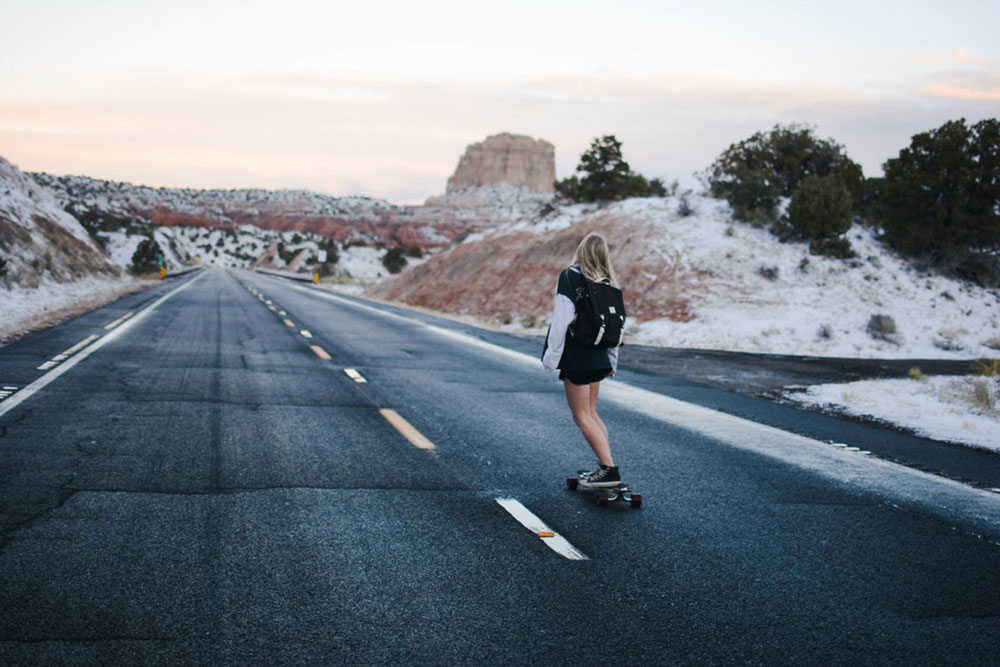
With different styles of skateboarding you’ll need different types of skateboards. And for slalom skating some types of boards are better than others. But if you’re new to skating, then you might be wondering what slalom is.
Slalom skating first came on the scene in the 1960s as a form of downhill racing. These skaters would race down mountain side roads, and steep hills in an attempt to be the first to the finish line.
And to make it more challenging, skaters race through an obstacle course, adding time to their run for each obstacle they hit. Therefore, slalom skateboards need to be fast, and easy to maneuver. Which requires larger, soft wheels, flexible trucks, and decks that are somewhere between the size of longboards and standard street skateboards.
Because of the speed they can reach, instead of kicking to push the board, skaters use a pumping motion. While slalom skating is often competitive, a slalom skateboard can still be used for everyday travel, or fun.
6. Pintail Longboards
View in gallery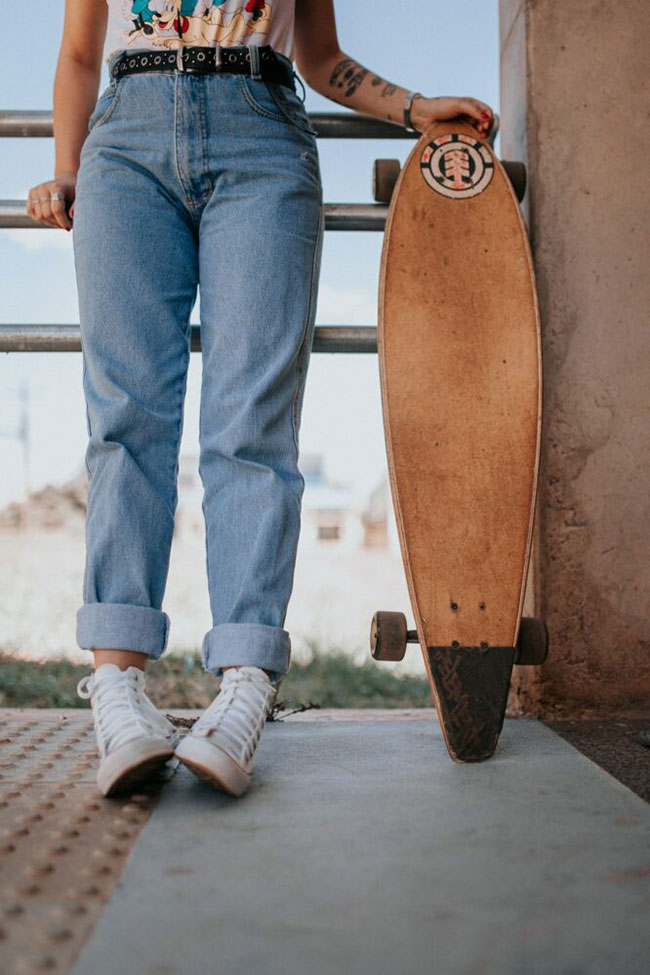
By changing the shape of a debt, you can alter the performance – it’s not all cosmetic. With pintail longboards, the design of the deck optimizes cruising and carving ability. So, you can reach high speeds, bomb steep hills, and cruise around town with ease.
One of the downsides to some skateboards is wheel bite. And pintail longboards feature design elements that help prevent your wheels from touching the deck. Which is why the deck forms at a point.
Along with a unique deck shape, pintail boards have trucks that are set close to the front and back of the board. This feature allows for more flexible movement when riding. So, if you want a versatile longboard that feels and looks like a surfboard, then the pintail style is the way to go
7. Twin Tip Longboards
View in gallery
If you want to really lean in the carving, or pick up a speed, then check out a twin tip longboard. Twin tip types of skateboards have a wide center and virtually identical narrow tail and nose.
By having a narrow tail and nose, you can carve deep without worrying about wheel bite. And the wide center keeps you stable when reaching high speeds.
Aside from the deck shape, twin tip boards have a truck setup that mounts by going through the deck. Unlike other board styles that have trucks mounted to the base of the deck.
With all these features, twin tip longboards are the perfect type of skateboard for speed freaks.
8. Double Drop Longboards
View in gallery
When you lower skateboard decks, the result is an increase in speed and stability. So, the best downhill longboards will allow the skater to have a low center of gravity.
But the only problem is if the deck is too low, it will hit the wheels. And hitting the wheels means slowing down. To solve that problem, there are double drop longboards.
With double drop longboards, the nose and tail are set higher than the center of the deck. And because of that additional drop, your center of gravity is lower, giving you an edge for a more stable ride.
Since the double drop style is faster and allows for more stability, it’s a great choice for commuting. And makes the ultimate downhill longboard. Because you want to get to where you’re going fast, without a wipe out.
9. Fishtail Skateboards
View in gallery
One of the more easily recognized skateboards is the fishtail. By cutting the shape of the tail into a fishtail you’re effectively reducing the chance of wheel bite.
Another benefit of a fishtail deck is the width. With a wider board, you’re able to have a more stable ride. Which means skaters can enjoy more heel and toe control on a fishtail skateboard.
You can find fishtail skateboards in many different sizes – from longboards, to cruiser boards.
10. Cruiser Skateboards
View in gallery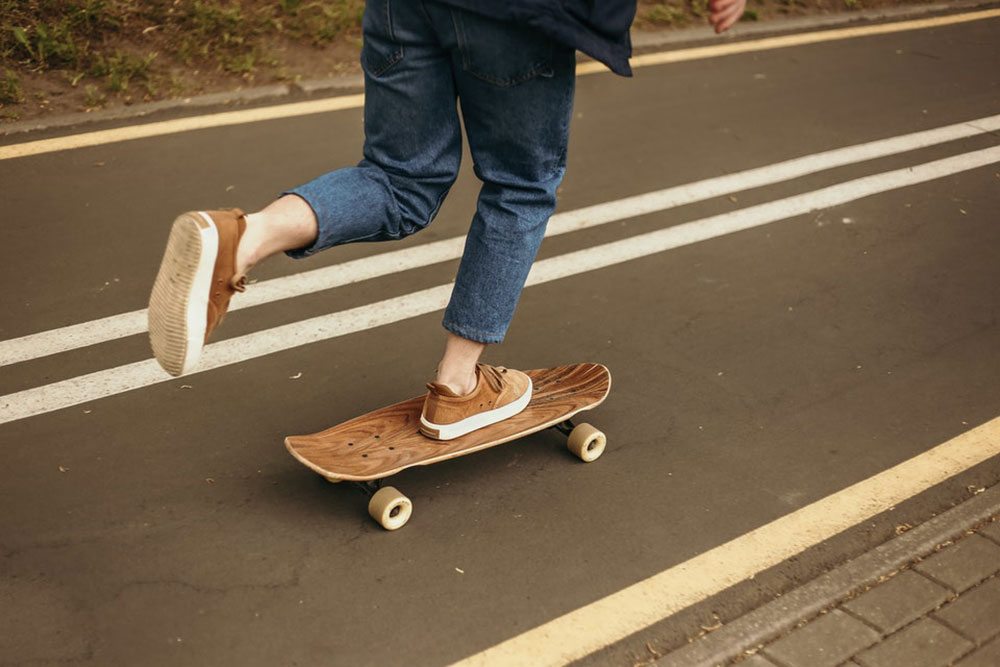
By far one of the most versatile types of skateboards is the cruiser skateboard. First, they have wider decks than many standard boards. But they also have bigger and softer wheels. So, when you add those two features together, you get a very comfortable riding experience.
Having a cruiser board to ride around town is ideal because they’re easy to transport when you’re not riding them. And they can get you where you need to be with ease.
If you’re looking for your first skateboard, cruisers make excellent beginner skateboards. New skaters can find their balance and gain confidence while learning on a cruiser board.
11. Mini Cruiser Skateboards
View in gallery
While cruiser skateboards are fun to ride and easy to transport, there are even smaller types of skateboards to choose from. Check out the mini cruiser skateboard. All the appeal of a cruiser but in a smaller size.
Now, don’t let the size food you, these aren’t toys. And they can really pack a punch. Without the added stability of a larger board, mini boards can be trickier to ride. But once you master the technique you’ll be cruising in style.
Because mini boards are more reactive, mini cruiser boards are more difficult to ride than standard cruiser boards. But with a small size, a mini cruiser board is a great for kids that are new to skating.
12. Onewheel Skateboard
View in gallery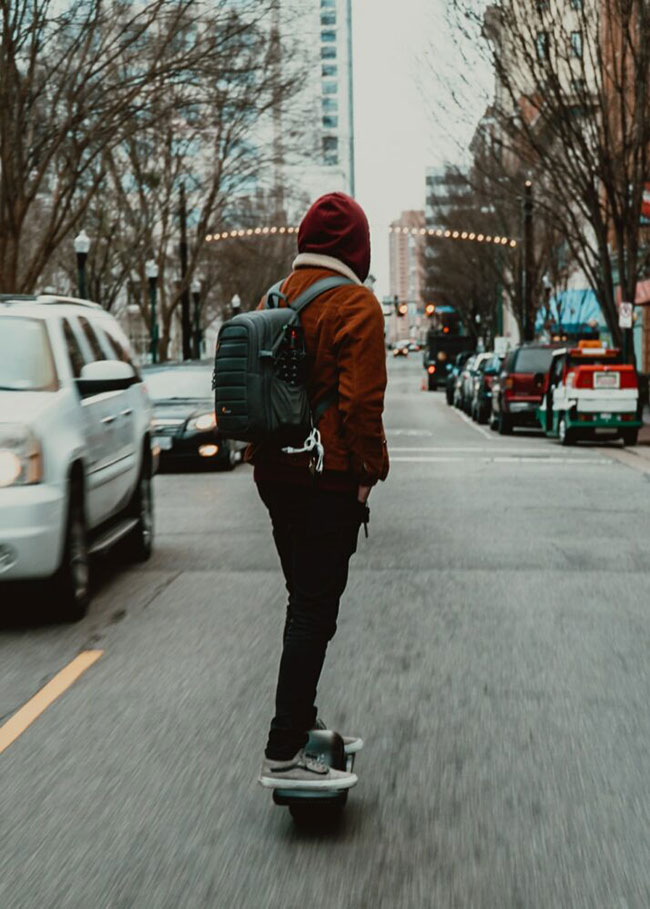
One of the newest types of skateboards on the market is the Onewheel skateboard. Unlike old school skateboards, Onewheel electric skateboards only need a single wheel to carry you from place to place.
Although from far away, the mechanics of this self-balancing skateboard design are questionable. But upon closer inspection, it’s easier to understand that it looks.
Featuring an electric motor, the Onewheel board pushing riders backwards and forwards based on their balance. So, if you lean in the direction you want to travel, the board will push you in that direction. And thanks to larger wheels, you don’t to perform a balancing act. These aren’t unicycles.
In addition to offering a new skateboard style, the Onewheel skateboard manufacturers, have an app to check stats for trips, and even set riding style preferences. Talk about high-tech.
13. Off Road Skateboards
View in gallery
Do you love the idea of skateboarding but live somewhere without adequate concrete and asphalt? Or do you want to take your skateboarding away from cityscapes and cul-de-sacs?
Then an off road skateboard might be exactly what you need.
By having large wheels with heavy tread, an off road skateboard can grip to a multitude of terrains. While you won’t be able to land regular skateboard tricks, off road boards are great for riding through trails, mud, grass, and even BMX courses.
And at the end of the day if you want to switch back to street skating, you can switch our your wheels. So, with a little elbow grease you can have your choice of two skateboarding styles.
14. Carve Skateboards
View in gallery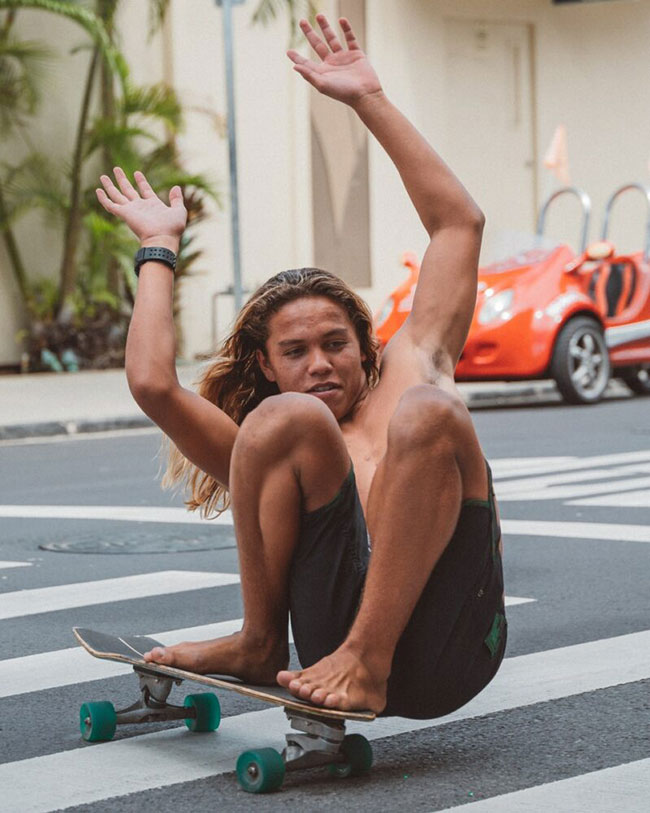
Have you ever seen a surfer make a sharp turn on a surfboard? Well, a carve skateboard allows you to perform the same move, only no waves are necessary.
With an old school skateboard, carving could be done in a pool or along an incline. But thanks to improvements in wheels, you can carve on most boards today.
However, the best choices for carving skateboards are longboard skateboards and other boards with large wheels and a large deck size. Once you get the hang of the motion, you can transfer that over onto other types of boards.
15. Penny Skateboards
View in gallery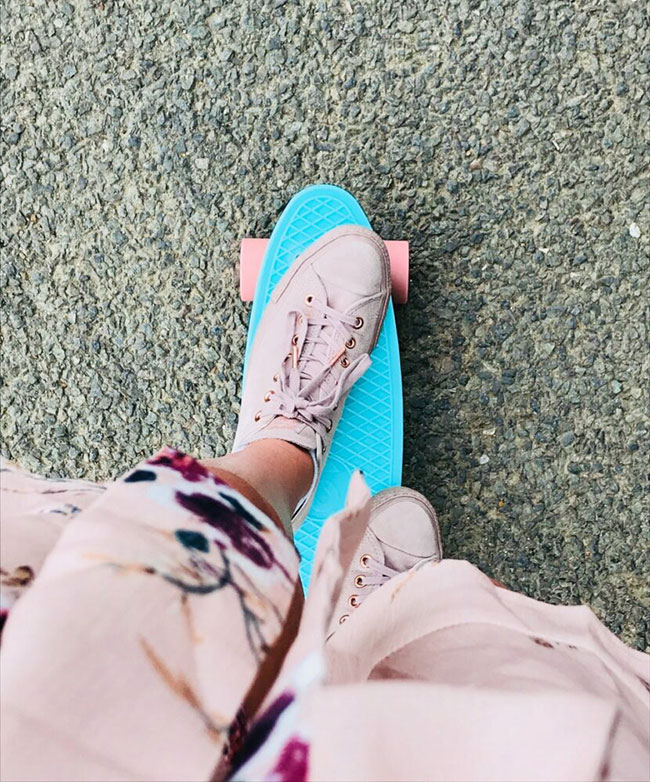
While the plastic skateboard’s silhouette dates back to the 1970s, the recent resurgence in this skateboard style also gave rise to the name penny boards. In 2010, the penny boards that we’re familiar with today were created under the company, Penny Skateboards. And the name became synonymous with the board.
What makes penny boards unique is the small size and the plastic technicolor boards. And by small we mean 22″.
Penny boards have a “waffle” texture on top of their decks. Which means you can ride them without additional grip support. However, these boards are small and narrow. Meaning that they’re unstable at best. So, more active skaters can choose to secure their footing by adding more grip to their penny setup.
Although many hardcore skaters argue the penny board’s place within the larger skateboarding community, the style remains popular.
16. Nickel Skateboards
View in gallery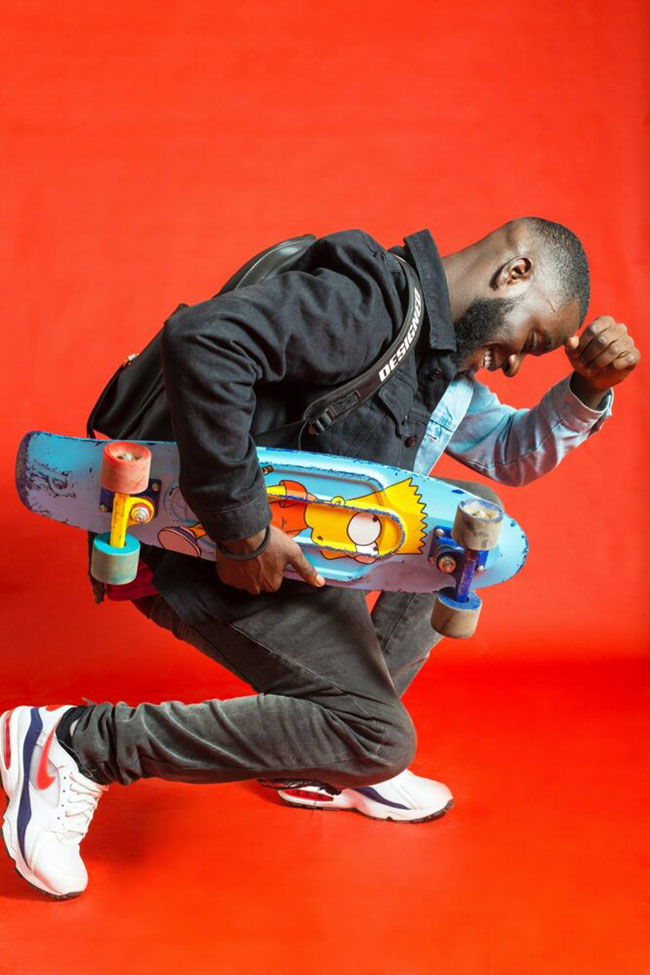
For those that love the look of the plastic penny boards, but hate the puny size, there’s a solution. Introducing the nickel skateboard.
Coming in at 27″, the nickel board is the slightly taller version of a penny. Along with a larger frame, all the elements of a penny are present: wild colors, plastic deck, and waffle grip.
And that additional length doesn’t break the bank either. In fact, you can find nickel skateboards for less than $100. Because of their low price, nickel boards are popular on college campuses.
If you’re new to skating and want a plastic skateboard, then nickel boards are the way to go.
17. Freestyle Skateboards
View in gallery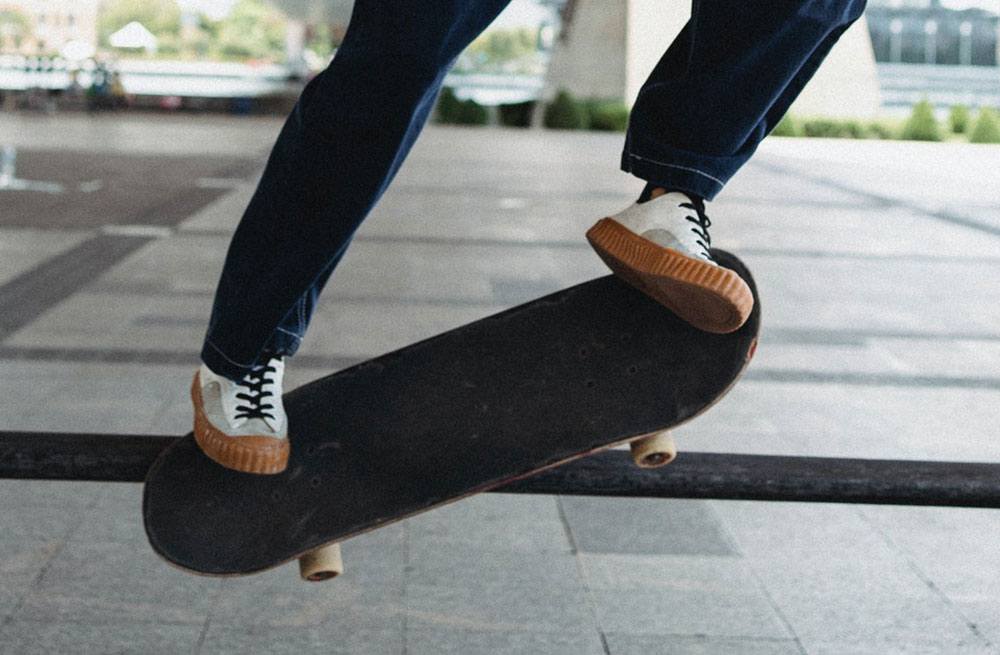
To the untrained eye, a freestyle skateboard may not seem all that different from a street skateboard. But freestyle skateboards are in a league of their own.
First, the shape of a freestyle skateboard has a less concave deck. By having a flatter board, the skaters can move more freely on the board. However, they’re not completely flat. Frequently, freestyle boards include double kick, and kick tail decks.
Then, on each end of the nose and tail, freestyle skaters often add skid plates. Due to how many tricks requiring hopping and skidding on the tips of the board, you can add skid plates for protection.
Another way freestyle skateboards are different than street skateboards involves the wheel size. With a freestyle board, the wheels are slightly wider in order to include two bearings per wheel. These bearings are offset from the center to protect the trucks from contact with the ground.
In freestyle skateboarding, there are a lot of tricks that require the skater to flip the board on it’s side. So, the board is in contact with the ground in ways other skateboarding styles steer clear of. Which makes these additional features on freestyle skateboards so important.
18. Steep Kick Skateboards
View in gallery
Having a steep kick tail on a skateboard means a strong “pop” when you’re performing ground tricks. But because a steep kick is farther from the ground, you have to put forth more effort to get that stronger pop.
So, while some skateboarders prefer steep kick skateboards, other’s would rather have a flatter board.
However, steep kick tails allow the rider to feel their position on the board when hitting high speeds, so they can perform tricks easily. If you’re look for a pool skateboard, then a steep kick will come in handy.
19. Eggboard Skateboards

As far as mini boards go, eggboards are among the smallest coming in at 9″. But the width allows for the eggboard to remain stable and makes them a solid skateboard choice.
With the width providing extra stability, eggboards can even handle downhill skateboarding. Out of all the smaller skateboard types, an eggboard has one of the most unique shapes, but it feels like the most complete skateboard.
You can cruise through town on your eggboard, then easily tuck it away in a backpack, or under your desk.
20. Vert Skateboards
View in gallery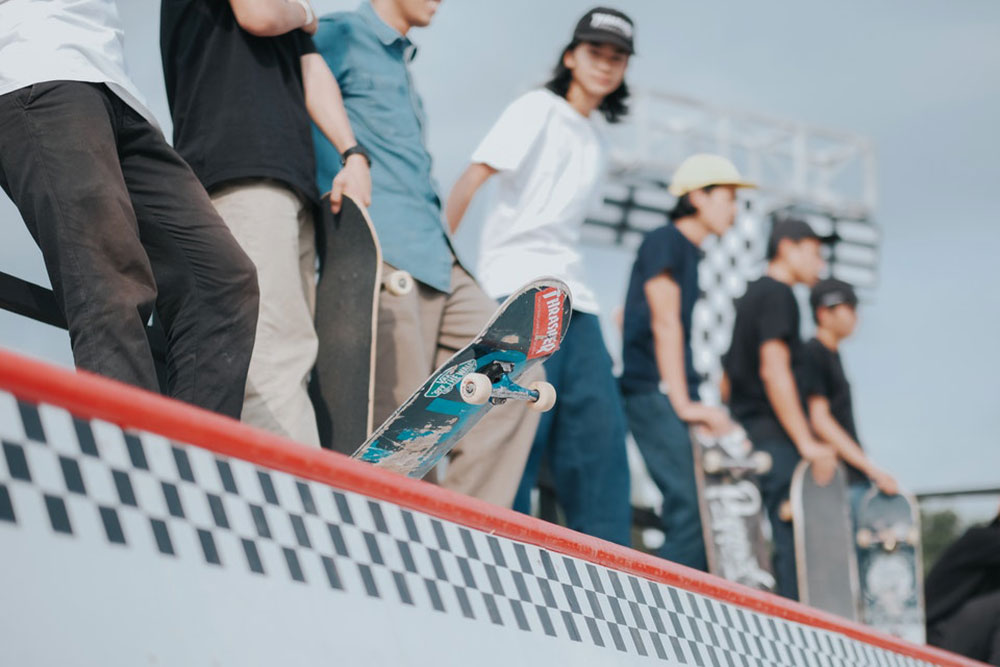
When you’re skating vert, it’s all about air. And the bigger the skate ramps are, the more air you can get on a vert skateboard. Plus, with steeper inclines, you get more speed. And to ensure you don’t wipe out, a vert skateboard uses larger wheels, and wider decks.
Vert skateboarding lets you take flip tricks to the next level – literally lifting you to new heights.
You can find vert ramps at skate parks. Although park skateboarding can be hard to come by, a designated skate park is usually the only place to find vert ramps.
Best Skateboard Style for Beginners
New to skateboarding? Are you wondering which of these types of skateboards is the best for beginners? Then we have you covered.
And to give you more options, we’ve gone ahead and separated them into categories based on size.
View in gallery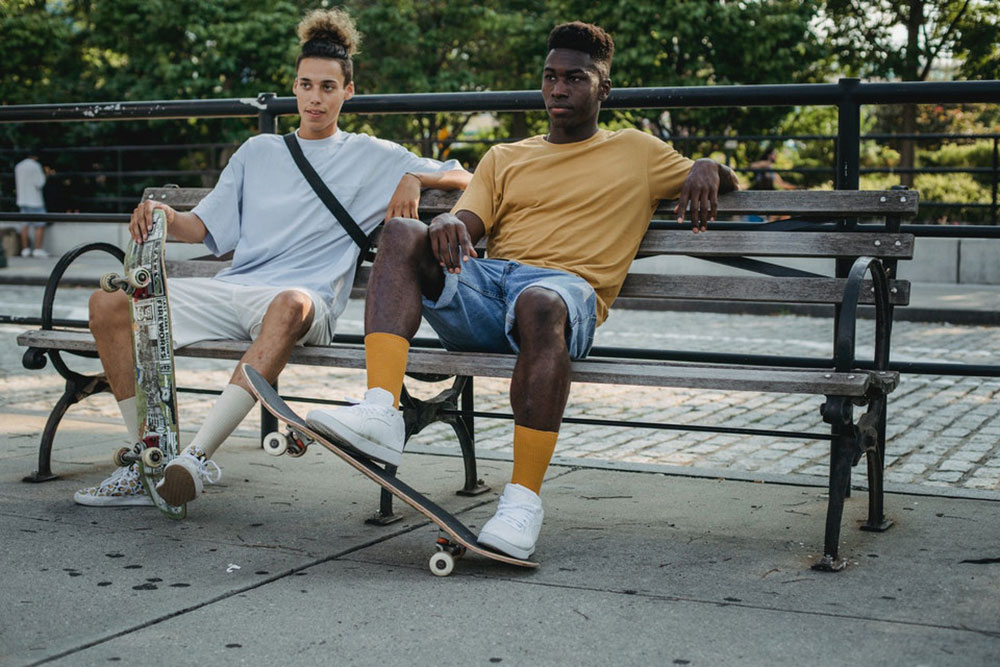
-
Longboard Types of Skateboards
If you’re looking for a beginner friendly longboard skateboard, then check out double drop longboards. Because they’re lower to the ground, they allow for more stability when cruising. Plus they make pushing your board easier.
-
Standard Types of Skateboards
For street, vert, or riding in skate parks, you’ll want a standard type of skateboard. But if you’re a novice skater, you’ll be better suited going for a wider deck.
Go for around 8.25″. The extra width gives you additional stability, which will help keep from colliding with the ground.
-
Mini Types of Skateboards
View in gallery
If you’re trying to choose from the available mini skateboards, mini cruisers are the way to go. You’ll get your portability, but you won’t sacrifice easy riding.
Unlike some mini types of skateboards, the mini cruiser skateboards are wider, and offer much needed stability. Mini cruisers are great for casual riders, and beginners.
Types of Skateboards: Final Thoughts
Whether you’re looking for a park skateboard, an old school board, or a downhill skateboard, there are skateboard types for every style. And now that you know about the many different types of boards, you can find one that works for you.
Are you an avid skater or new to the sport? Tell us about the types of skateboards you prefer in the comments below. We love to hear from our readers.


